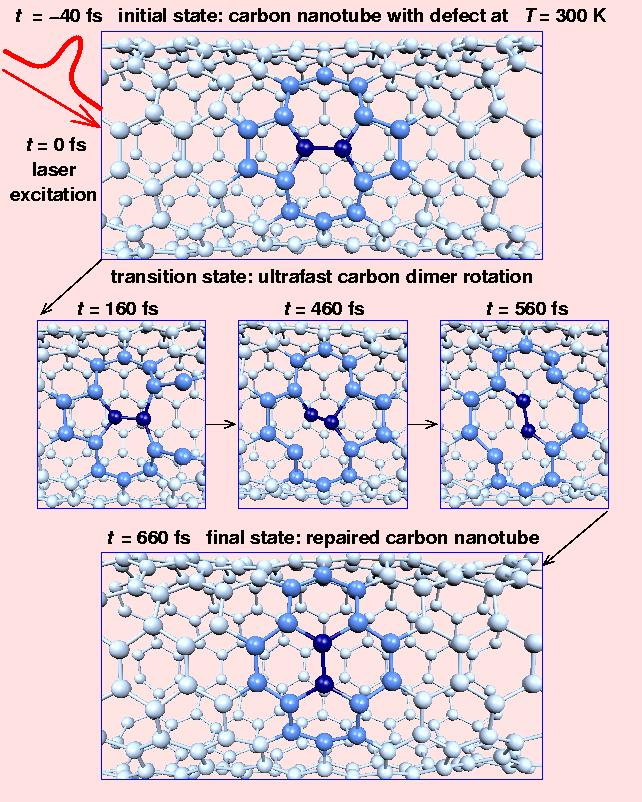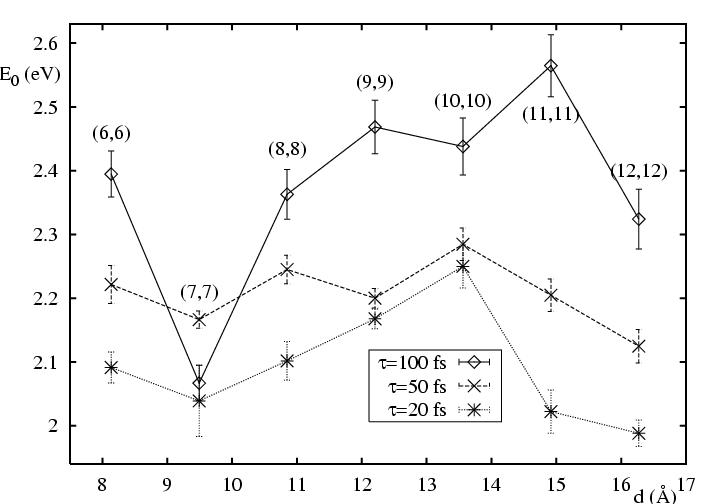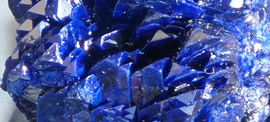page content
Laser excitation of carbon nanostructures
Defects in carbon nanotubes
Carbon nanotubes (CNTs), single- and multi-walled exhibit fascinating
electronic and mechanical properties but the presence of defects such
as vacancies or pentagon-heptagon (5-7) pairs have a serious impact on
these properties. We investigate the possibility of removing
pentagon-heptagon defects with the help of ultrashort laser
pulses. Using non-adiabatic molecular dynamics simulations
we show that pentagon-heptagon defects become instable in the presence
of a strong electron-hole plasma of app. 7% of the valence
electrons. This leads to an ultrafast healing of the
defects. Observations that resonant Raman spectra show a ten-fold
intensity increase after intense laser irradiation of a carbon
nanotube ensemble support our prediction of laser-induced healing of
defects.

Figure: Snapshots of the response of a (7,7) carbon nanotube to an ultrashort laser pulse leading to the elimination of the pentagon-heptagon defect.
A. H. Romero, M. E. Garcia, F. Valencia, H. Terrones, M.Terrones, and H. O. Jeschke
Femtosecond Laser Nanosurgery of Defects in Carbon Nanotubes
Nano Lett. 5, 1361 (2005). (doi,pdf).
Stability of carbon nanotubes in intense laser fields
We investigate the stability carbon nanotubes within a a large range
of diameters and chiralities with respect to intense laser
irradiation.

Figure: Damage thresholds of (n,n) carbon nanotubes as a function of diameter and laser pulse duration.
H. O. Jeschke, A. H. Romero, M. E. Garcia, and A. Rubio
Microscopic investigation of laser-induced structural changes in single-wall carbon nanotubes
Phys. Rev. B 75, 125412 (2007). (doi,pdf).
Coherent phonons in capped carbon nanotubes
The growth process of carbon nanotubes is often spontaneously
terminated by the formation of a spherical cap, ending the growth of
the nanotube. A method to open capped nanotubes could have important
applications in the control of the growth process. We investigate the
response of capped carbon nanotubes to intense laser fields. We find
that short laser pulses are suitable for an efficient removal of
spherical caps from carbon nanotubes. The mechanism of this process
can be identified as the excitatation of two coherent phonons in the
tube body and caps, respectively. The different frequencies of these
phonons lead to large strain and fracture in the region where tube and
cap are joined.

Figure: Response of a (10,0) carbon nanotube to an intense laser pulse. The caps are cleanly separated from the tube body.
T. Dumitrica, M. E. Garcia, H. O. Jeschke and B. I. Yakobson
Selective cap opening in carbon nanotubes driven by laser-induced coherent phonons
Phys. Rev. Lett. 92, 117401 (2004). (doi,pdf)
